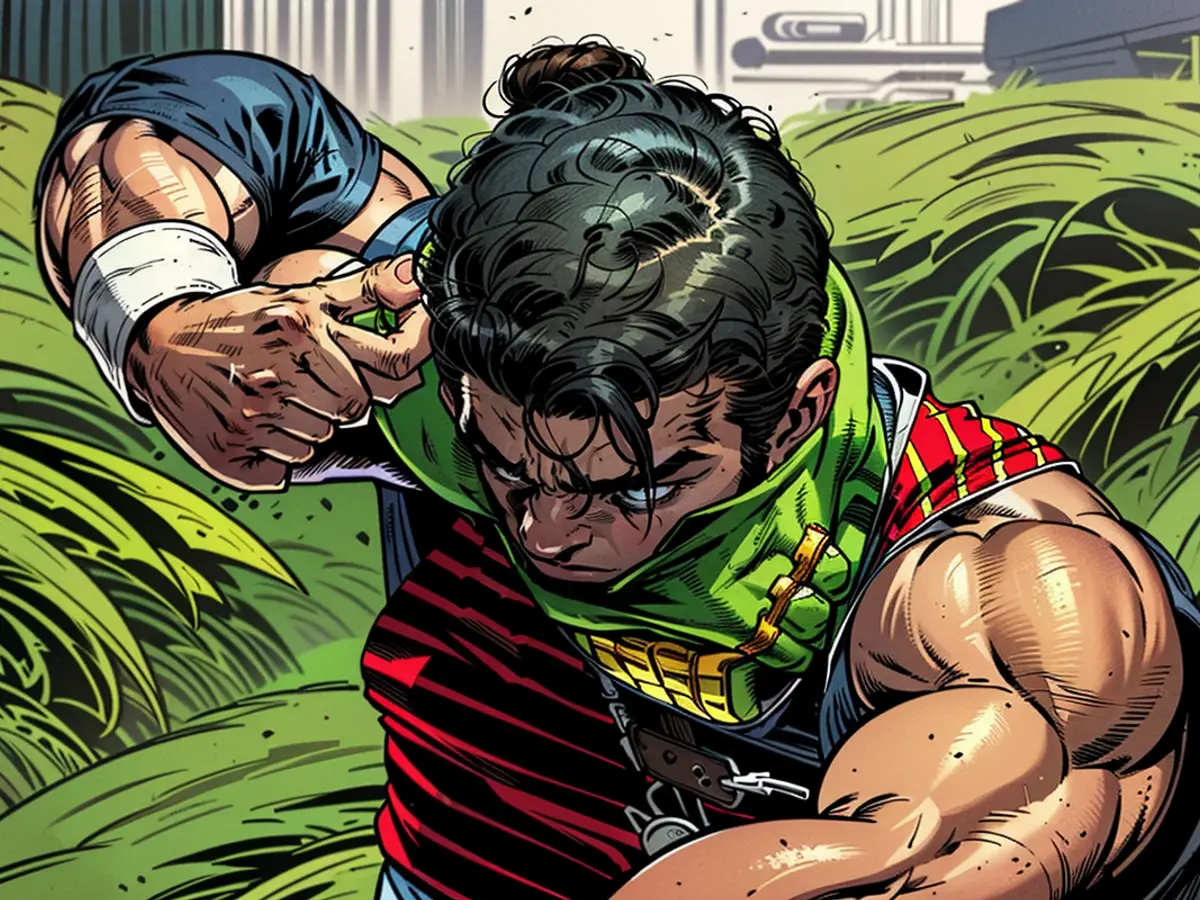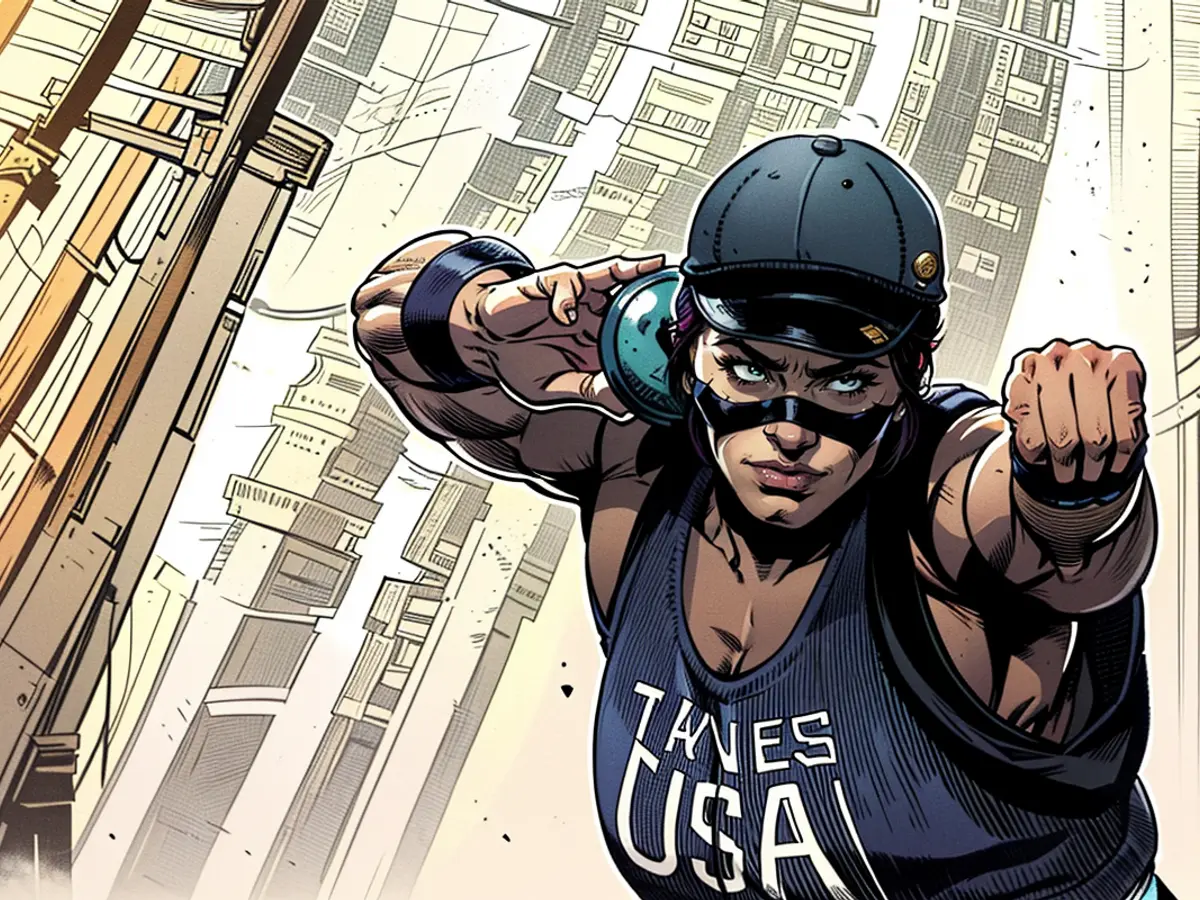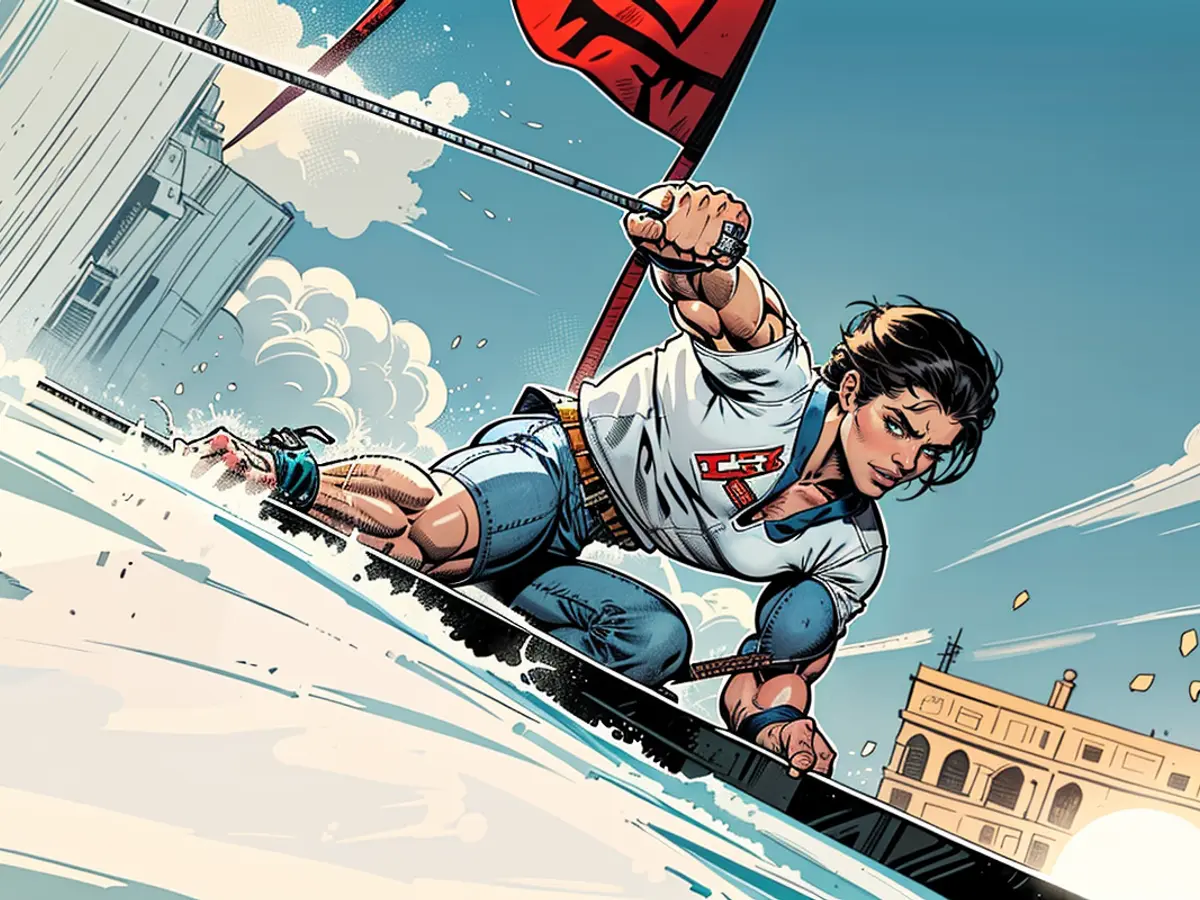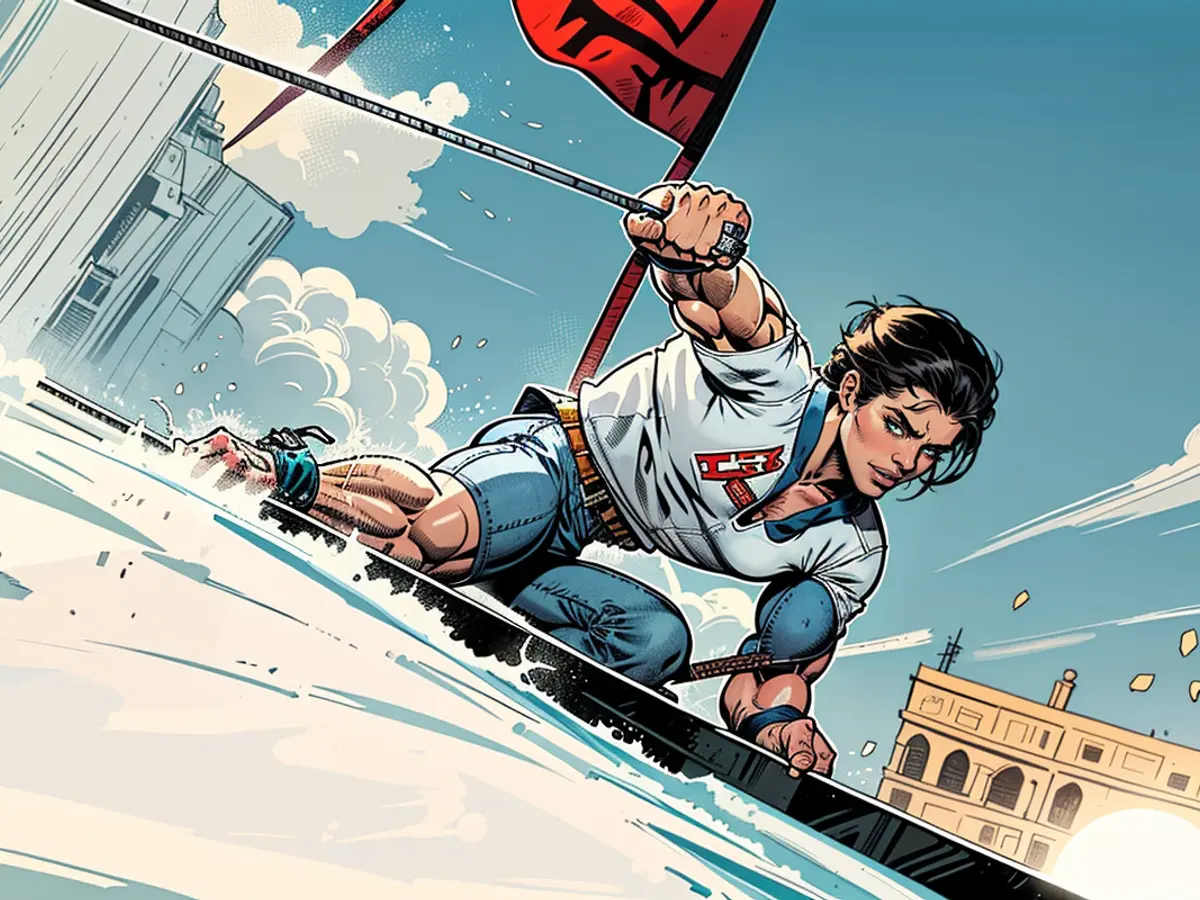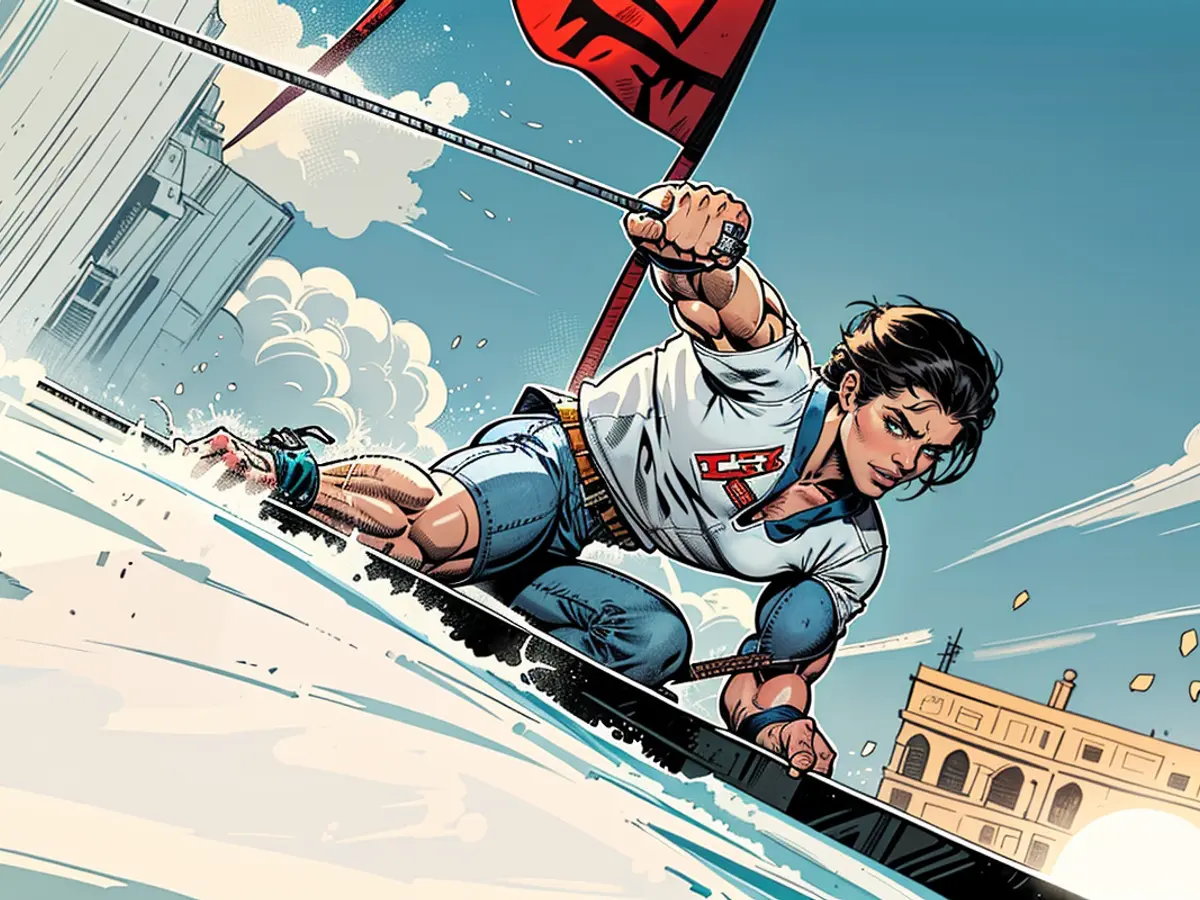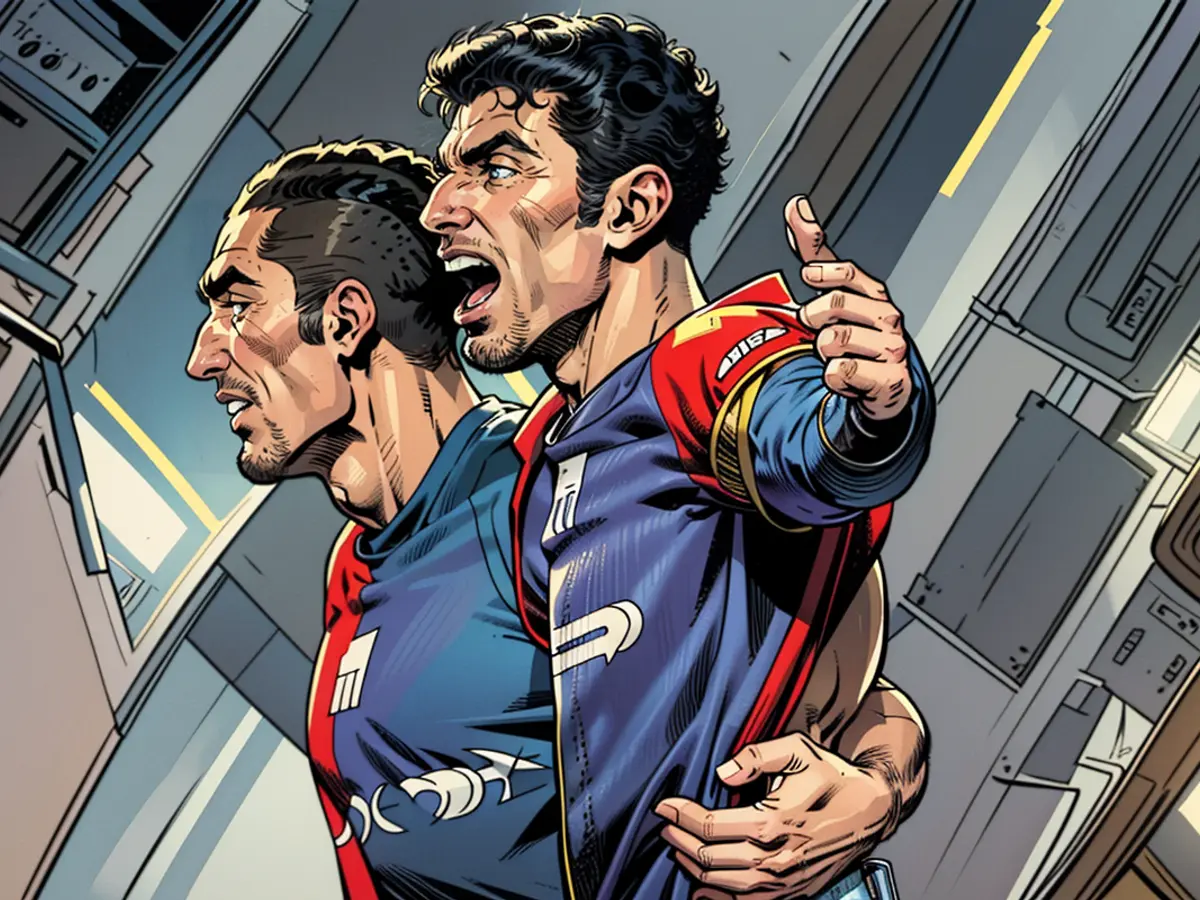"Hulk" Saunders fights against more than the rest of the world
Raven Saunders puts on a flamboyant show with a masked face and eccentric style at the Olympics. But the non-binary US shot put champion stands for more: It's about fighting for diversity, against suicidal thoughts - and against Donald Trump.
Completely masked, centimeter-long nails, blue-neon green hair, mirrored sunglasses: This is how Raven Saunders from the USA presents themselves at the entrance to the Olympic shot put final (Friday, 19:40 CET on ZDF and Eurosport) in Paris on Thursday. Everyone in the Stade de France and watching on screens recognizes: This is not your average event. Something special is happening here.
Raven Saunders, 28, uses the pronouns "they/them" as a non-binary person, already setting them apart from the norm at the Olympics - and worldwide. Saunders also stands out with their appearance: In addition to the ten-centimeter-long fingernails, there's a golden nose ring and "gold grills," hip-hop dental jewelry. They openly display diversity and encourage thought and entertainment, louder than other athletes.
The silver medal in shot put at the 2020 Tokyo Olympics was celebrated with a twerk dance on the tartan track. Saunders brings entertainment to a sport that usually doesn't get much attention, aside from prime-time events like the 100-meter final or the pole vault competition.
Saunders' alter ego: The Hulk
Above all, track and field fans know Saunders for their mask. The completely masked entrance in Paris, where they qualified for the final with a throw of 18.62 meters, is an exception. Usually, spectators see "The Hulk," the green Marvel superhero with superhuman powers. Saunders wore the mask initially due to COVID restrictions in Tokyo, but later to distance themselves from competitors and feel like a superhero ready to hurl the 4-kilogram metal ball.
Saunders also loudly advocates for the rights of Black, women, and queer people, openly discussing mental health issues and suicidal thoughts to break down barriers. They become more than just a masked person; they become a symbol, a symbol of the fight for those who stand outside of mainstream society and struggle for recognition and rights.
"The Hulk" serves as an alter ego, a reflection of what Saunders has learned over the years to protect themselves, set boundaries, and control their strength. Growing up in difficult circumstances with a single mother and sister in South Carolina, Saunders felt helpless. In a short documentary by US broadcaster PBS, they spoke about their childhood: "It was normal to be tough." They faced stepfathers who were drug addicts and alcoholics and abused their mother. The shot put champion felt helpless and started weightlifting in high school to protect themselves.
At the beginning, it was difficult for me to control when the Hulk would appear and when it wouldn't," Saunders explains. "But on my journey, especially in dealing with mental health, I've learned to set boundaries, just like Bruce Banner (the brilliant scientist who transforms into a green giant in the comics) has learned to control the Hulk, and has learned to let the Hulk out at the right moments, which also gave him a sign of mental peace."
Saunders and Suicidal Thoughts
As Saunders becomes stronger than most of the boys at school, they are encouraged to try shot put. With success. "I had finally found something I was good at," Saunders says in the PBS doc. "It gave me a sense of purpose in life." At the 2016 Olympics in Rio, Saunders, at 20 years old, surprisingly lands in fifth place. But the success doesn't last. In the off-season, the shot put champ loses the sporting meaning in life.
Saunders falls into deep depressions. "I was sitting there with my childhood traumas, stress, and self-worth issues." They swallow it all down, feeling like they can't talk to anyone. Even quits shot putting. Suicidal thoughts haunt Saunders and become more acute. When Saunders is once on the verge of taking their own life, the shot put champ writes to their then-therapist, who fortunately responds immediately.
"When I step into this stadium, I can conquer anything," Saunders says today, because they've been through so much and overcome it. Moreover, Saunders wants to use their own platform to represent those who don't have one and bring light to their lives: "I really hope that I can inspire and motivate so many people in the LGBTQ community, so many people struggling with mental health issues, so many people from the African American community, so many Black people all over the world, if I come home with a medal."
Historically, Black Americans have had less access to appropriate psychosocial services than the white majority. Saunders wants these people to also recognize that it's okay to use these services. "It's okay to be strong, and it's okay to not be 100 percent strong all the time, and it's okay to need people," Saunders says after winning the silver medal in Tokyo.
Sign Against Donald Trump
In Japan, Saunders causes a stir after the medal ceremony when they cross their arms over their head in the shape of an X. "It represents the intersection where all oppressed people meet," Saunders says at the time. It was also a sign to former US President Donald Trump and his right-wing, divisive followers who verbally attacked athletes who seemed "woke" to them in the US.
Two days after winning the silver medal, Saunders' mother passes away, and the non-binary shot put champ posts on social media: "My mom was a great woman and will live on through me. My guardian angel number one." Later, Saunders is given an 18-month suspension by the US Anti-Doping Agency for missing doping controls. "I've accepted it and used the time to focus on my work," Saunders says, who doesn't have a coach. "More time to focus on making the Olympic team, more time to focus on myself and my mental health. It's actually turned out to be an advantage for me."
Saunders to compete in Paris final against formidable opponents. Among them is Germany's discus hope Yemisi Ogunleye, a devout Christian who wears a Jesus cross around her neck and engages in a quiet conversation with her God before each throw. She qualified for the final as the third-best with a throw of 19.24 meters, letting out a primal scream. The Mannheim native won silver at this year's indoor World Championships and also impressed as a singer, recently performing a duet with long jump queen Malaika Mihambo on social media.
Also competing in the thrilling evening event are Alina Kenzel (18.16 meters) from Stuttgart, Tokyo Olympic champion Lijiao Gong (18.78 meters, China), and co-favorite Sarah Mitton (19.77 meters, Canada). However, world champion Chase Ealey (born Jackson) surprisingly had to pack her bags after her 17.60-meter throw. The 30-year-old caused a stir upon her arrival in Paris, sharing a story on Instagram about a "logistical nightmare". There was no uniform in her size, and while she has since accepted her figure, she revealed that she had been discriminated against in the past due to her body, which she found hurtful.
Saunders with "the power of resilience"
No American has ever won multiple Olympic medals in women's discus. Saunders aims to change that, wearing a mask, nails, and gold glitter on her teeth. She sends a message to others who don't fit the norm, encouraging them not to hide.
"In the darkest days, I dragged myself out of bed, into the gym, with tears in my eyes, wondering when it would all end," Saunders recalled in Paris. "I just kept fighting, every single day. It felt like endless months, but eventually, I broke through. That's the power of resilience, perseverance, trust, and faith."
Saunders has often mentioned looking up to Venus and Serena Williams as a child and the impact of seeing black tennis stars. Now, Raven hopes to inspire girls, boys, women, men, and everyone in between through open words and strong performances in the Paris discus final.
In the world of athletics, Raven Saunders is known not only for their exceptional performance in shot put but also for their unique identity and advocacy. As a non-binary athlete, Saunders uses their platform to fight for diversity and mental health awareness, often challenging societal norms with their flamboyant style.
Furthermore, Saunders' masked persona, "The Hulk," serves as an alter ego, a reflection of their strength and resilience against adversity. This powerful symbol encourages others who may feel marginalized and encourages them to embrace their identities and fight for their rights.
